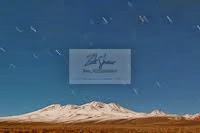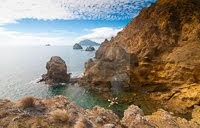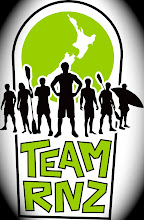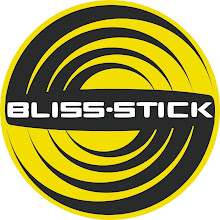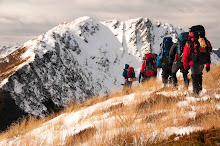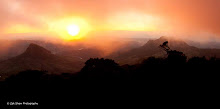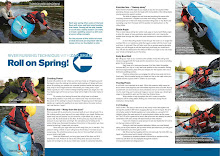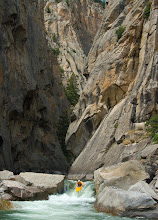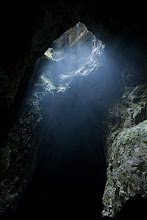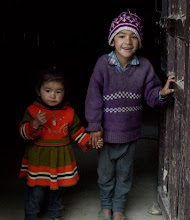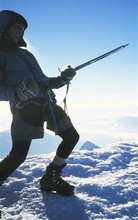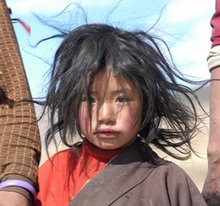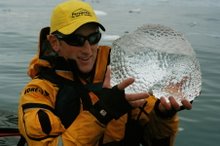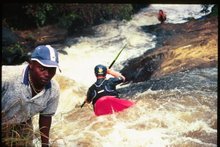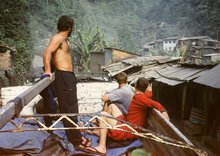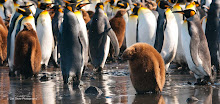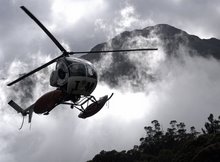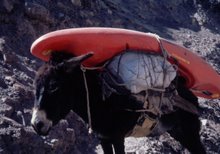This hot off the press! Story below the link.
http://www.stuff.co.nz/southland-times/news/features/3149710/What-a-rush
Southland times interviewed Keith Riley and myself upon our completion of the East Waikaia descent. Keith Riley grew up in the deep south and his connection to the Waikaia valley is strong.
http://www.stuff.co.nz/southland-times/news/features/3149710/What-a-rush
Southland times interviewed Keith Riley and myself upon our completion of the East Waikaia descent. Keith Riley grew up in the deep south and his connection to the Waikaia valley is strong.

We were interviewed by Mark Hotton an Invercargill journalist. I attempted to influence the story by highlighting that the speed at which the Wild Rivers campaign was launched was due to the fact that although NZ has many different user groups and people involved in the river environment that ultimately NZers immerse themselves in the environment for similar reasons. On the surface it would seem that jetboaters, fisherman and kayakers would struggle to agree and make fast campaign headway due to the nature of each sport. However with threats to NZ's river environments mounting campaign members relised that regardless of craft or activity that many different groups choose to recreate and appreciate the river environement for similar reasons.

I left the interview feeling like I had left a clear message. The message being that the Lifeblood of a Nation expedition is not just about a group of kayakers trying to protect their favourite rapids nor is the expedition entirely focused on paddling full on whitewater. A deeper message underlies what we are doing. If more people in NZ were aware of whats out there and develop a greater affinity for our remaining wild river environments then NZers will relise that the types of people fighting to keep our rivers wild are actually everyday Kiwis. The Wild Rivers campaign members are an accurate cross section of the NZ public.
"Rivers are the lifeblood of our nation and hopefully people will realise that."
Enjoy the story below - Zak
A remote and rugged stretch of Southland river has been kayaked for the first time. Mark Hotton talks to a former Invercargill man about his involvement.
He sits above a mass of tumbling whitewater, a three metre drop from the edge of a waterfall to safe water below.
His helmet strap is tight, but it gets another quick tug just to be sure, before the lifejacket is readjusted again. He takes a deep breath.
A thin layer of plastic sits between him and the dozens of rocks that create the whitewater he is about to tackle.
He disregards everything but the line the tiny kayak must take to negotiate the rapid.
He has walked the river up and down, backwards and forwards, and can picture precisely where he needs to paddle, where he needs to twist to manoeuvre a tight spot and where he can pause to let the water flow do the work and get him through safely.
Most people would be shaking in their seat at the prospect of launching themselves into a grade five rapid in a rugged back country river.
But former Invercargill man Keith Riley has spent 15 years kayaking New Zealand rivers, gathering the skills and experience necessary to take on such a challenge. And he will nail it.
Mr Riley returned to Southland last month with two friends to kayak what is believed to be a previously undescended section of the stunningly beautiful and remote east branch of the Waikaia river.
He and two friends, Zak Shaw and Dylan Thomson, flew by helicopter to the start of the river and spent three days kayaking the 16km of river that drops 600m.
They describe it as one of the top three kayakable rivers in New Zealand, with Mr Riley describing it as the pinnacle of his kayaking career.
"I've never encountered a river of that steepness and difficulty where apart from two tiny sections there was a kayakable line through it.
"Mentally it was super draining because we'd scout long sections and have to remember long convoluted lines – you wanted to write the lines on the front of the boat so you didn't forget them on the way through.
"Physically we were rooted. The kayaking is quite physical but then you're moving up and down over boulders and difficult terrain, lifting boats and that all accumulates."
He paddled the west branch of the river about 10 years ago and the trio have chosen to tackle its twin as part of a series of expeditions, Lifeblood of a Nation, to support a Wild Rivers campaign and raise awareness of New Zealand rivers.
"It feels like the East Waikaia finally appeared on the radar in the realm of what's possible in a kayak only in the last three or four years," Mr Riley said.
"With the evolution of kayaking and the equipment we've been able to explore steeper and steeper rivers."
The river is in one of the most remote parts of Southland, north of Waikaia in the Old Woman Range. It is that far north the closest town is Alexandra, as the crow flies.
They worked out it could potentially be kayaked without seeing it in person by looking at the gradient of the terrain, and estimating the flow amount and size and taking a punt.
A punt that paid off for the trio.
"We've flown in all wide eyed and have been blown away by the quality and quantity of whitewater," Mr Riley said.
"The pictures make it look super extreme and make us look like full on loose bastards.
"But what they don't show is the amount of time we spent moving up and down the river, discussing consequences and putting different safety in place.
"We don't paddle any of that without total confidence that we're going to hit the line as we planned."
The years spent kayaking and understanding how to put safety systems in place has made those types of extreme rapids more manageable, he said.
Mr Riley, an outdoor recreation tutor at Tai Poutini Polytechnic in Greymouth, said the Waikaia River below the Canton Bridge down was an iconic whitewater kayaking trip but the upper part had the potential to become an even more significant trip.
"It's under-appreciated and most of the population wouldn't know about it. I'd regard that as one of the most stunning and spectacular places in the country."
The Waikaia River has a special affinity for Mr Riley. It was where he learned to paddle and it is those types of connection that link the Lifeblood of a Nation expedition and the Wild Rivers campaign.
The Wild Rivers campaign was created by groups – including Forest and Bird, Whitewater NZ, Federated Mountain Clubs and Fish and Game – concerned about the rising threat to wild rivers.
Mr Shaw said the Life Blood of a Nation expedition was a Sparc funded initiative to link in to that campaign while highlighting the threats many New Zealand rivers faced and what could potentially be lost to hydro-electricity projects.
The Lifeblood team is a mix of three of New Zealand's most well-known kayakers Mick Hopkinson, Graham Charles and Mr Shaw, who have teamed up for an adventure that aims to profile New Zealand's wild rivers. They plan to photograph threatened rivers while exploring new and demanding kayak runs.
"The underlying theme was to support the Wild Rivers campaign (wildrivers.org.nz) which aims to raise the consciousness of the New Zealand public and remind Kiwis of the importance of rivers and the part they play in everyday life so they're not taken for granted," Mr Shaw said.
"It's not about firing off big drops and getting scared and being extreme."
The aim was to profile river journeys – both family trips and classic New Zealand river trips and raise greater awareness and appreciation of the role that New Zealand rivers play.
"The rivers are under threat from privatisation when they're owned by the people.
"Ultimately these things are irreversible. Hydro isn't a renewable source – it has huge impact on a river environment.
"At the moment it seems we have this free open season where anyone can look at a river and go through the resource consent process and eventually come away with a fairly sizeable scheme that is going to produce some significant returns.
"But they don't own the river. I think a lot of New Zealanders are realising that maybe we do need more electricity but maybe we need some sort of futuristic outlook where we look at which rivers are stunning and particularly scenic and look at preserving them." Footage and photographs off the trips were being collated with the possibility of a book and possibly a documentary being created.
"If we can get more people passionate about what's on our back doorstep and getting them thinking about what happens when you mess with the environment, then that's a good thing.
"Rivers are the lifeblood of our nation and hopefully people will realise that."
To follow the expedition visit http://www.passion4adventure.blogspot.com/
Enjoy the story below - Zak
A remote and rugged stretch of Southland river has been kayaked for the first time. Mark Hotton talks to a former Invercargill man about his involvement.
He sits above a mass of tumbling whitewater, a three metre drop from the edge of a waterfall to safe water below.
His helmet strap is tight, but it gets another quick tug just to be sure, before the lifejacket is readjusted again. He takes a deep breath.
A thin layer of plastic sits between him and the dozens of rocks that create the whitewater he is about to tackle.
He disregards everything but the line the tiny kayak must take to negotiate the rapid.
He has walked the river up and down, backwards and forwards, and can picture precisely where he needs to paddle, where he needs to twist to manoeuvre a tight spot and where he can pause to let the water flow do the work and get him through safely.
Most people would be shaking in their seat at the prospect of launching themselves into a grade five rapid in a rugged back country river.
But former Invercargill man Keith Riley has spent 15 years kayaking New Zealand rivers, gathering the skills and experience necessary to take on such a challenge. And he will nail it.
Mr Riley returned to Southland last month with two friends to kayak what is believed to be a previously undescended section of the stunningly beautiful and remote east branch of the Waikaia river.
He and two friends, Zak Shaw and Dylan Thomson, flew by helicopter to the start of the river and spent three days kayaking the 16km of river that drops 600m.
They describe it as one of the top three kayakable rivers in New Zealand, with Mr Riley describing it as the pinnacle of his kayaking career.
"I've never encountered a river of that steepness and difficulty where apart from two tiny sections there was a kayakable line through it.
"Mentally it was super draining because we'd scout long sections and have to remember long convoluted lines – you wanted to write the lines on the front of the boat so you didn't forget them on the way through.
"Physically we were rooted. The kayaking is quite physical but then you're moving up and down over boulders and difficult terrain, lifting boats and that all accumulates."
He paddled the west branch of the river about 10 years ago and the trio have chosen to tackle its twin as part of a series of expeditions, Lifeblood of a Nation, to support a Wild Rivers campaign and raise awareness of New Zealand rivers.
"It feels like the East Waikaia finally appeared on the radar in the realm of what's possible in a kayak only in the last three or four years," Mr Riley said.
"With the evolution of kayaking and the equipment we've been able to explore steeper and steeper rivers."
The river is in one of the most remote parts of Southland, north of Waikaia in the Old Woman Range. It is that far north the closest town is Alexandra, as the crow flies.
They worked out it could potentially be kayaked without seeing it in person by looking at the gradient of the terrain, and estimating the flow amount and size and taking a punt.
A punt that paid off for the trio.
"We've flown in all wide eyed and have been blown away by the quality and quantity of whitewater," Mr Riley said.
"The pictures make it look super extreme and make us look like full on loose bastards.
"But what they don't show is the amount of time we spent moving up and down the river, discussing consequences and putting different safety in place.
"We don't paddle any of that without total confidence that we're going to hit the line as we planned."
The years spent kayaking and understanding how to put safety systems in place has made those types of extreme rapids more manageable, he said.
Mr Riley, an outdoor recreation tutor at Tai Poutini Polytechnic in Greymouth, said the Waikaia River below the Canton Bridge down was an iconic whitewater kayaking trip but the upper part had the potential to become an even more significant trip.
"It's under-appreciated and most of the population wouldn't know about it. I'd regard that as one of the most stunning and spectacular places in the country."
The Waikaia River has a special affinity for Mr Riley. It was where he learned to paddle and it is those types of connection that link the Lifeblood of a Nation expedition and the Wild Rivers campaign.
The Wild Rivers campaign was created by groups – including Forest and Bird, Whitewater NZ, Federated Mountain Clubs and Fish and Game – concerned about the rising threat to wild rivers.
Mr Shaw said the Life Blood of a Nation expedition was a Sparc funded initiative to link in to that campaign while highlighting the threats many New Zealand rivers faced and what could potentially be lost to hydro-electricity projects.
The Lifeblood team is a mix of three of New Zealand's most well-known kayakers Mick Hopkinson, Graham Charles and Mr Shaw, who have teamed up for an adventure that aims to profile New Zealand's wild rivers. They plan to photograph threatened rivers while exploring new and demanding kayak runs.
"The underlying theme was to support the Wild Rivers campaign (wildrivers.org.nz) which aims to raise the consciousness of the New Zealand public and remind Kiwis of the importance of rivers and the part they play in everyday life so they're not taken for granted," Mr Shaw said.
"It's not about firing off big drops and getting scared and being extreme."
The aim was to profile river journeys – both family trips and classic New Zealand river trips and raise greater awareness and appreciation of the role that New Zealand rivers play.
"The rivers are under threat from privatisation when they're owned by the people.
"Ultimately these things are irreversible. Hydro isn't a renewable source – it has huge impact on a river environment.
"At the moment it seems we have this free open season where anyone can look at a river and go through the resource consent process and eventually come away with a fairly sizeable scheme that is going to produce some significant returns.
"But they don't own the river. I think a lot of New Zealanders are realising that maybe we do need more electricity but maybe we need some sort of futuristic outlook where we look at which rivers are stunning and particularly scenic and look at preserving them." Footage and photographs off the trips were being collated with the possibility of a book and possibly a documentary being created.
"If we can get more people passionate about what's on our back doorstep and getting them thinking about what happens when you mess with the environment, then that's a good thing.
"Rivers are the lifeblood of our nation and hopefully people will realise that."
To follow the expedition visit http://www.passion4adventure.blogspot.com/

